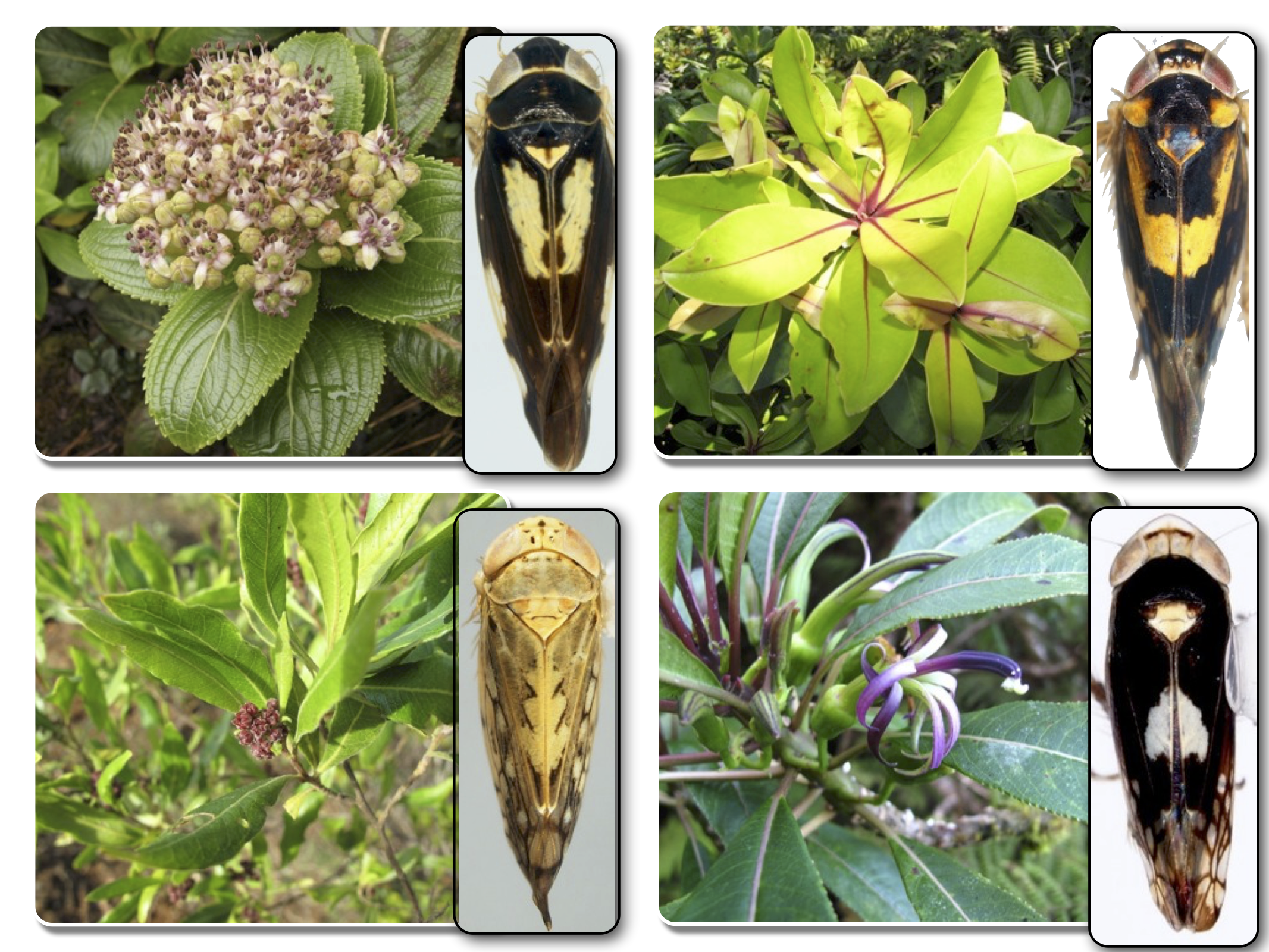Ecology and Evolution of Adaptive Radiations
Our early work focused on how plant-insect interactions shape species diversity in an adaptive radiation. The Hawaiian Archipelago presents a chronologically replicated island system with high levels of endemicity (90-99% in plants and animals). Our work leverages the island geology to understand speciation patterns in the endemic leafhoppers, Nesophrosyne (Hemiptera: Cicadellidae). Our work has revealed that the Nesophrosyne are hyper-diverse (>200 species) and specialize on a single host-plant species. The genus colonized Hawaii ~3-4 Mya from the Western Pacific rim. Species diversified rapidly by specializing on the endemic flora. Island geology acted as a multiplier of species diversity as insects dispersed to new volcanic mountains. However, these ecological and geological opportunities were eventually exhausted. This work provided the foundational understanding of how host-plants and geology can shape insect diversity.


Our lab is now interested in using this foundational work to:
(1) Better understand how short-term ecological and long-term evolutionary forces shape species diversity in the Nesophrosyne and related endemic insect genera. (2) Develop the Nesophrosyne system to investigate the role microbial symbionts have played in shaping species-level diversification.

Recent Projects
Ecology & Evolution
Recent collaboration with Rosemary Gillespie and folks on the Hawaiian Biodiversity Dimensions grant
Adaptive Radiations
Recent work on the influence of host plants and geography on species diversification in hawaii